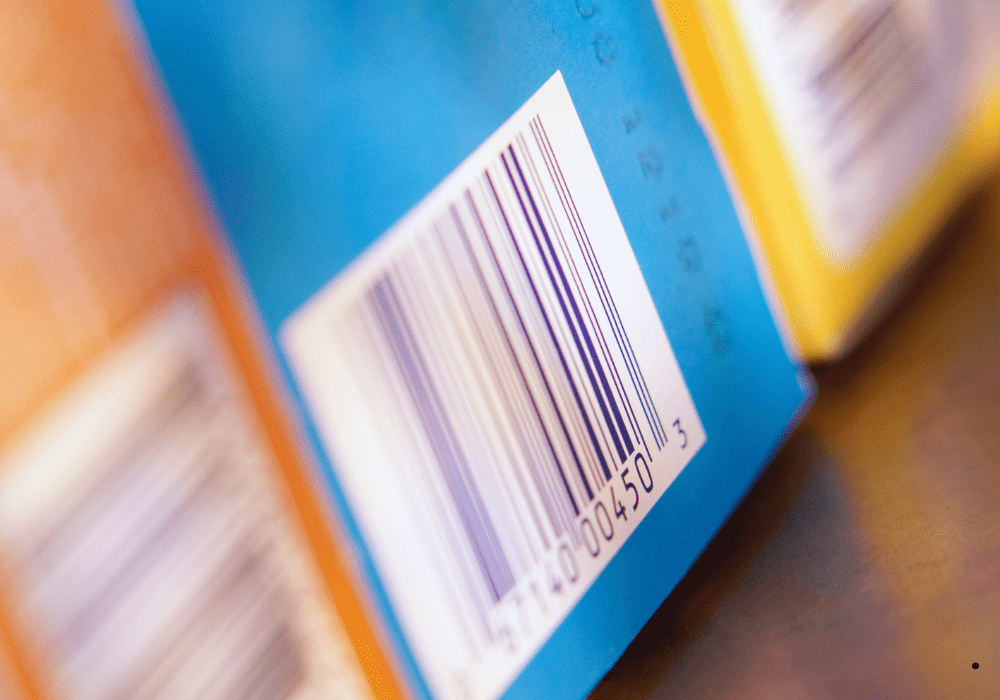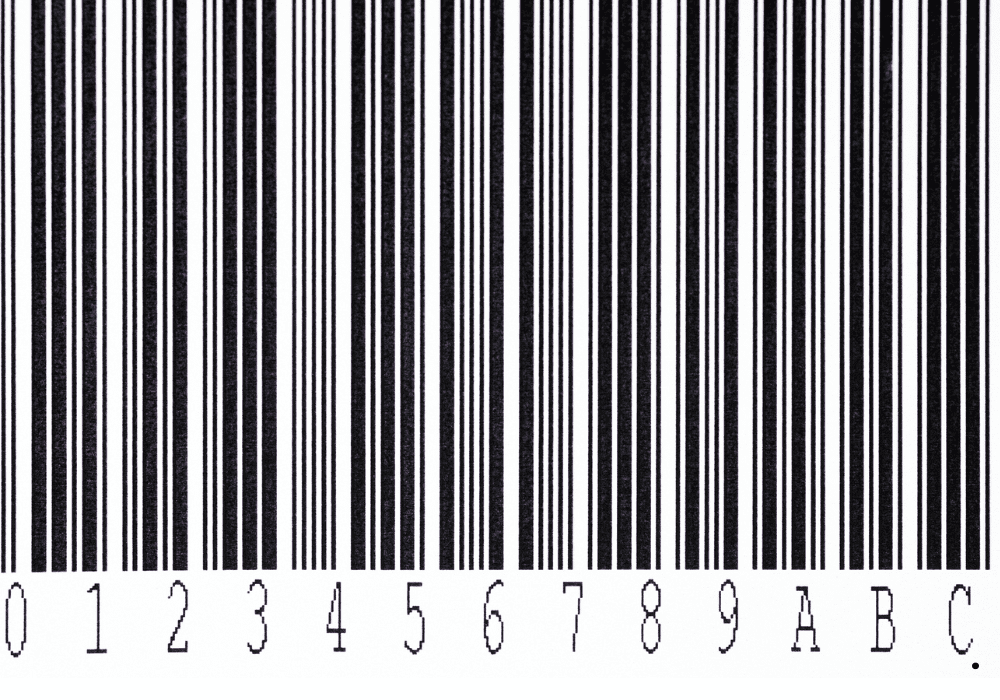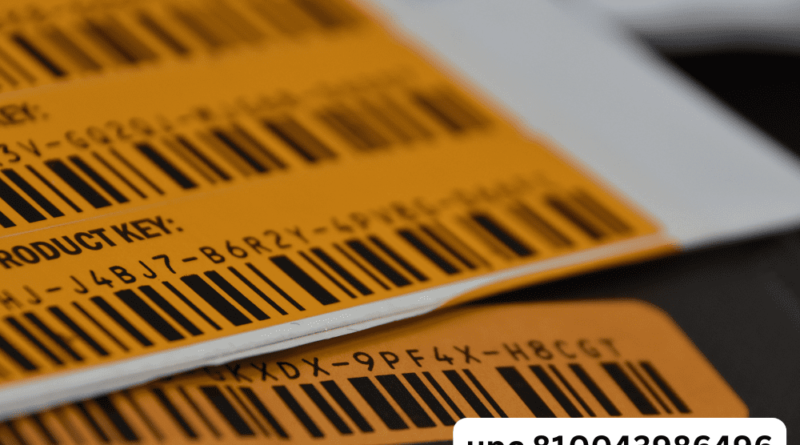UPC 810043986496: A Comprehensive Guide to Understanding and Utilizing This Product Identifier
Universal Product Codes (UPC) are essential for product identification, inventory management, and seamless retail operations. One particular UPC, 810043986496, is a unique code assigned to a specific product, helping businesses, consumers, and stakeholders easily track and identify the item. This guide will explore the importance, functionality, and usage of UPC 810043986496, delving into its significance in the modern retail landscape.
What is a UPC?
A Universal Product Code (UPC) is a standardized barcode used worldwide for identifying products in retail settings. It consists of a unique set of 12 digits and is accompanied by a barcode that machines can read. The purpose of a UPC is to streamline transactions, making it easier for retailers to manage inventories and for consumers to identify products.
The 12-digit number ensures every product is identifiable across the globe. Each UPC is unique, meaning no two different products will have the same UPC, allowing retailers and manufacturers to manage products effectively.
Understanding UPC 810043986496
UPC 810043986496 represents a unique product identifier tied to a specific item. Although the details of the product associated with this code may not always be immediately accessible, understanding the function of this UPC can help both retailers and consumers find relevant information quickly.
By entering UPC 810043986496 into search engines or retail systems, consumers can retrieve detailed product descriptions, prices, availability, and reviews. Retailers can use this code to manage inventory, set prices, and ensure that the product is properly listed across various platforms.
This particular UPC follows the same structure as all other UPCs and contains a combination of digits that point to the manufacturer and product category.
The Importance of UPCs in Retail
Universal Product Codes (UPCs) are indispensable tools in the retail world. Their primary role is to help identify products during checkout, facilitate inventory management, and ensure a smooth supply chain. With millions of products on the market, UPCs ensure that each item is unique, allowing for efficient tracking and purchasing processes.
For UPC 810043986496, just like any other UPC, retailers rely on the code to minimize errors during transactions. UPCs also play a crucial role in data collection, helping retailers analyze consumer buying habits and improve their inventory management.
For larger operations, UPCs are critical for maintaining consistency across multiple locations. With UPCs, retailers can manage product prices, descriptions, and availability from one centralized system, ensuring that customers receive accurate information at every point of purchase.
How UPC 810043986496 Are Structured
Every UPC consists of 12 digits, which are divided into distinct segments. Here’s how UPC 810043986496 breaks down:
- Manufacturer Prefix (810043): The first six digits represent the manufacturer. In this case, 810043 points to a specific company that owns the rights to distribute and sell the product.
- Product Code (98649): The following five digits uniquely identify the product within the manufacturer’s catalog.
- Check Digit (6): The final digit is the check digit, which ensures the accuracy of the code when scanned. This digit is calculated mathematically using the preceding numbers to verify the barcode’s integrity.
The structured format allows businesses and retailers to use UPCs like 810043986496 universally, making it easier to manage and search for products globally.
The Role of UPCs in Supply Chain Management

In supply chain management, UPCs streamline processes from manufacturing to consumer purchase. With UPC 810043986496, a company can track the product through every stage—manufacturing, shipping, storage, and point-of-sale. UPCs play a critical role in inventory tracking and ensuring that products are restocked efficiently.
For retailers, using UPCs allows for real-time inventory management, reducing the chances of stockouts or overstocking. This efficient tracking system not only saves costs but also enhances the overall customer experience by ensuring products are available when needed.
UPCs also assist in reducing errors in order fulfillment and prevent mismatches between products listed and what’s actually in stock.
How to Search for a Product Using UPC 810043986496
Searching for a product using UPC 810043986496 is simple. Here’s a step-by-step guide:
- Use a Search Engine: Enter the full UPC number (810043986496) into your preferred search engine. This often brings up multiple results, including product descriptions, online stores, and consumer reviews.
- Visit Retailer Websites: Major retailers often provide search functions that allow users to search for products by UPC. Type in the UPC on a retailer’s site for more specific details.
- Barcode Scanning Apps: Many smartphone apps are available for scanning UPC barcodes. By scanning or entering the UPC number, consumers can find information on where to purchase the item, compare prices, or read customer reviews.
Retailers and consumers alike can benefit from easy access to detailed product data by searching UPC 810043986496.
Benefits of Using UPCs for Businesses
Businesses across industries benefit greatly from using UPCs. Here’s how:
- Efficiency in Inventory Management: UPCs, such as 810043986496, allow businesses to track items with accuracy. Companies can monitor stock levels in real time, reducing manual errors.
- Streamlined Checkout Processes: UPCs speed up checkout times by enabling automated scanning. This eliminates the need for manually entering product prices and descriptions.
- Improved Data Collection: Businesses can gather valuable data from UPCs, such as sales trends, inventory levels, and consumer preferences.
- Brand Consistency: By having a single, unique UPC for every product, businesses can ensure that their products are listed consistently across various sales platforms.
How Consumers Can Benefit from UPCs
UPCs are not just for businesses—consumers benefit too:
- Product Identification: Consumers can use UPCs to accurately identify products, such as verifying that UPC 810043986496 is indeed the correct item they are looking for.
- Price Comparison: By searching the UPC on multiple platforms, consumers can compare prices and find the best deals.
- Consumer Protection: UPCs help ensure consumers receive the exact product they intend to buy, reducing errors in online shopping and preventing counterfeit goods from entering the market.
- Access to Reviews and Ratings: Many retailers provide product reviews and ratings linked to UPCs. Consumers can read others’ experiences before purchasing an item.
Common Mistakes When Using UPCs
Even though UPCs are easy to use, there are some common mistakes that both retailers and consumers can make:
- Entering Incorrect UPCs: Entering a wrong digit while searching for a product can lead to confusion or errors. UPCs need to be entered exactly as shown.
- Duplicate UPC Assignment: Businesses may mistakenly assign the same UPC to different products, which can lead to inventory issues and consumer confusion.
- Failure to Update UPCs: When products undergo significant changes (such as new packaging or a major redesign), businesses may fail to update the associated UPC, causing discrepancies in their inventory systems.
Understanding these mistakes can help users ensure smoother transactions and more accurate product identification when using UPCs like 810043986496.
How to Generate UPCs for Your Own Products
If you are a business owner looking to sell products, you’ll need to generate UPCs for your items. Here’s how:
- Register with GS1: GS1 is the organization responsible for issuing UPCs. By registering with them, you’ll be assigned a unique company prefix, which forms the first part of all your UPCs.
- Assign Product Codes: Once you have your prefix, assign a unique product code to each item in your inventory. This ensures that each product has its own UPC.
- Verify with a Check Digit: The final digit of the UPC is the check digit. Use GS1’s check digit calculator to ensure your UPC is valid.
By following these steps, businesses can generate UPCs that are recognized worldwide, including unique ones like 810043986496.
UPC vs. Other Product Identifiers (EAN, ISBN, ASIN)

There are several other product identification codes used alongside UPCs. Here’s how they differ:
- EAN (European Article Number): EANs are used primarily outside of North America and consist of 13 digits, unlike the 12-digit UPC.
- ISBN (International Standard Book Number): ISBNs are specifically used for books and contain either 10 or 13 digits.
- ASIN (Amazon Standard Identification Number): ASINs are unique to products sold on Amazon and serve as product identifiers for the platform.
While UPC 810043986496 is a standard identifier for retail products, it differs from these other codes, which have specific uses based on region or platform.
How to Use UPCs in Online Marketplaces
Online marketplaces, such as Amazon, eBay, and Walmart, rely heavily on UPCs for listing products. Here’s how you can use UPC 810043986496 or similar UPCs on these platforms:
- Product Listings: When listing a product, sellers must include the UPC to ensure their item is categorized correctly and shows up in search results.
- Inventory Tracking: UPCs are vital for keeping track of inventory, especially in marketplaces with millions of listings. Using a correct UPC ensures stock levels are accurate.
- Avoiding Listing Errors: Including an incorrect UPC can lead to your product being placed in the wrong category or missing from search results altogether.
The Legalities Surrounding UPCs
UPCs are legally protected by GS1, the governing body that oversees the creation and distribution of these codes. Companies that use UPCs like 810043986496 must comply with GS1 standards, which include:
- Avoiding Duplicate UPCs: It is illegal to reuse UPCs for different products.
- Registering Your Prefix: Businesses must have a valid GS1 prefix to create UPCs. Using unauthorized prefixes is against GS1 regulations.
- UPC Management: Businesses are responsible for managing their UPCs and ensuring they are used correctly in the supply chain and retail environment.
Failing to comply with these regulations can lead to legal repercussions, making it essential for businesses to understand the legal framework around UPCs.
Technology and Future Trends in UPC Management
Technology is constantly evolving, and UPC management is no exception. Here are some emerging trends:
- RFID Integration: Radio Frequency Identification (RFID) is being integrated with UPCs to further streamline inventory management and tracking.
- Blockchain Technology: Blockchain can provide more transparent product tracking, ensuring that UPCs are used accurately across the supply chain.
- AI in Retail: Artificial intelligence is being used to analyze UPC data for better inventory management and sales forecasting.
Frequently Asked Questions (FAQs)
1. What product is associated with UPC 810043986496?
The specific product can be found by searching the UPC online or using a barcode scanning app. Retailers and manufacturers typically list the item details associated with this code.
2. Can I create my own UPC?
Yes, businesses can create their own UPCs by registering with GS1 and following the process of assigning product codes.
3. How do UPCs benefit consumers?
UPCs help consumers verify product authenticity, compare prices, and read reviews, ensuring they get the right product at the best price.
4. Are UPCs used worldwide?
Yes, UPCs are used globally, though different regions might favor other codes like EAN in Europe. However, UPCs remain widely accepted internationally.
5. Can a product have more than one UPC?
Yes, if a product is sold by multiple manufacturers or has different variations, it may have more than one UPC.
Conclusion
UPC 810043986496 is a vital component in the retail ecosystem, serving as a key identifier for products, facilitating smooth inventory management, and providing benefits to both businesses and consumers. Whether you’re a retailer, consumer, or business owner, understanding how UPCs work and how to use them efficiently will improve your shopping and selling experience.

